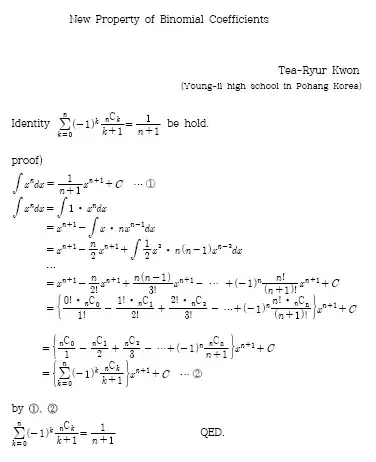Here's a probabilistic proof of the equivalent identity $$\frac{n}{n+1} = \sum\limits_{r=1}^n \frac{(-1)^{r+1}}{r+1}\binom{n}{r} .$$
Choose $n+1$ numbers at random from (the uniform distribution on) $[0,1]$ and call them $x_1, x_2, \ldots, x_{n+1}$. If we select $r$ numbers from $\{x_2, \ldots, x_{n+1}\}$, the probability that $x_1$ is larger than all $r$ of them is $\frac{1}{r+1}$.
Question: What's the probability that at least one of $x_2, \ldots, x_{n+1}$ is larger than $x_1$?
Answer 1: Using the complement, it's $1 - \frac{1}{n+1} = \frac{n}{n+1}$.
Answer 2: By the principle of inclusion-exclusion, it's also $\sum\limits_{r=1}^n (-1)^{r+1}\binom{n}{r} \frac{1}{r+1}.$
(For those not familiar with inclusion-exclusion, it's the generalization of the identity $P(A \cup B) = P(A) + P(B) - P(A \cap B)$ from 2 sets to $n$ sets. First you add in the probabilities of all the singleton sets, but that double-counts the probabilities of the intersections of two sets, so you subtract those off, but then you have to add back the probabilities of the intersections of three sets, etc.)
